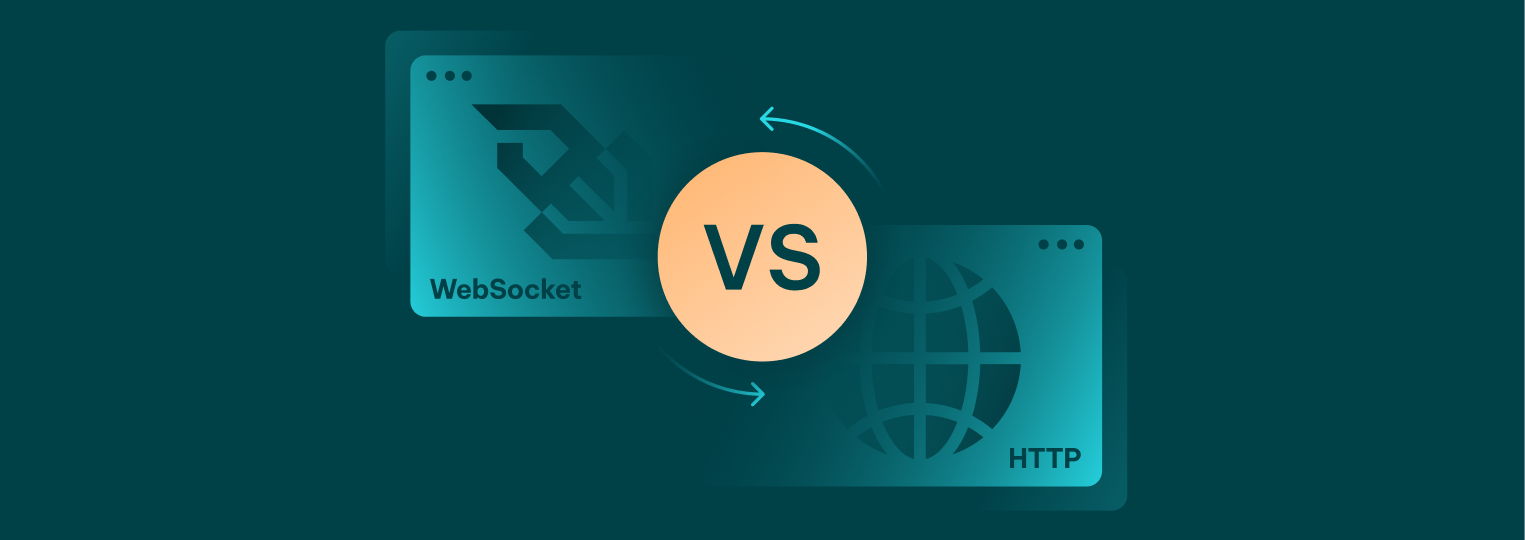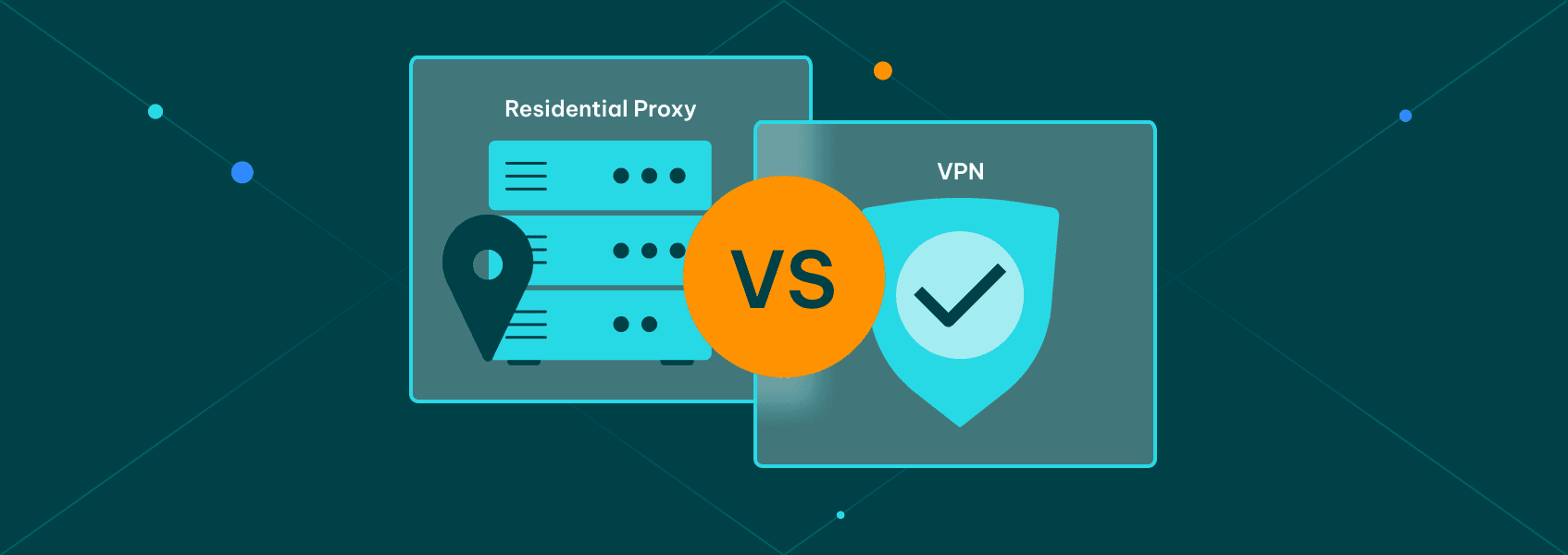WebSocket vs HTTP: Key Differences Explained
Proxy fundamentals

Marijus Narbutas
WebSocket vs HTTP: Key Differences Explained Choosing the right communication protocol is crucial for your success if your goal is to create a seamless and responsive web service. It will define how users perceive your website and how convenient it is to interact with it.
Two of the most prominent options are HTTP and WebSocket. Both of these communication protocols are important in their own ways and provide solutions to different needs and scenarios. In this article, you will learn what each of them is used for and how they differ.
Understanding HTTP Protocol
What is HTTP Protocol?
HTTP is an abbreviation of Hypertext Transfer Protocol. Web browsers and servers use this request-response protocol to send data across the internet.
To put it simply, when you click a link, your web browser sends a message to a web server, requesting the webpage. After the HTTP request, the server responds and presents you with an HTML file that is the webpage you want to visit.
HTTP has a stateless nature, which means it starts fresh with each new connection. Your HTTP connection doesn’t retain information about requests that happened in the past.
While it makes things simple, it can also slow down websites that need continuous updates or real-time data exchange.
To further simplify how HTTP protocol works, imagine making a new phone call every time you want to tell someone something, instead of staying on one long call for a fluent conversation.
How HTTP Protocol Works
The HTTP protocol follows a clear request-response pattern:
- You enter a URL to the web browser.
- Your web browser makes an HTTP request to the server by using one of the HTTP methods, such as GET (open a webpage), POST (send a form), PUT (update your profile), or DELETE (remove a post).
- It processes your HTTP request, and the server responds with the requested HTML content or an error message if the content cannot be found or if some other issue appears.
After the server responds and you get the content that you requested with one of the HTTP methods mentioned above, the HTTP connection ends. If you need more updates, you need to initiate a new connection by sending a new request.
HTTP Features
- HTTP headers contain metadata about the content in your HTTP request.
- Caching is supported by HTTP and reduces server load and improves site performance.
- HTTP streaming enables sending data in smaller increments, which is useful if your HTTP request contains long videos or large files.
While HTTP streaming is not inherently a built-in feature of HTTP, it can be implemented using techniques like chunked transfer encoding for HTTP protocol version 1.1 or through continuous connections.
HTTP Protocol Use Cases
HTTP protocol is the backbone of most traditional web applications and is widely used for:
- Loading websites with text, images, and scripts.
- Delivering APIs via REST.
- HTTP streaming for media files.
Its ubiquity and simplicity make it the first choice for most web-based projects that don’t require real-time processes.
Understanding WebSocket Protocol
WebSocket connection is designed to fix HTTP problems with live updates. While HTTP protocol needs constant single-use request-response communication, WebSocket protocol enables bi-directional open-line communication between both the client and the server.
It enables communication between the client and the WebSocket server without the overhead of re-establishing connections.
WebSocket server uses a TCP connection to make sure that no data packets get lost along the way. However, they include extra application-level rules that allow better communication management.
To sum up, WebSockets’ bi-directional communication is great for things like chat rooms or live sports scores where you need quick updates without delay or server overload.
WebSocket Architecture
A WebSocket connection begins with an HTTP handshake. Once the handshake is complete and the two communication protocols agree to talk with each other, the HTTP protocol upgrades to a WebSocket connection. Such a setup is great when you need real-time updates or constant data sharing.
Features of WebSockets
- Low latency
Communication travels quickly because you don’t need to establish new connections every time.
- Full-duplex communication
Both parties can send and receive data simultaneously.
WebSocket Protocol Use Cases
WebSockets are best suited for web applications that require live updates or interactive features. For example:
- Online gaming for smooth and instantaneous gameplay.
- Real-time chat apps with instant messaging and zero delays.
- Stock tickers and dashboards that keep users informed of updates as soon as they happen.
- Collaborative tools with real-time interaction like shared Google Docs and Figma.
In short, WebSocket protocol is a must in situations where low latency and real-time interactions are critical.
WebSocket vs HTTP: How They Compare
| Feature | HTTP | Websocket |
|---|---|---|
| Protocol type | Stateless, request-response protocol | Stateful, persistent communication |
| Communication | One-directional at a time | Bi-directional, full-duplex |
| Connection lifecycle | Opens and closes for each client request | Continuous after initial HTTP handshake |
| Performance | Higher overhead due to repeat connections | Efficient for frequent data exchange |
| Use cases | Traditional web applications, REST APIs | Real-time apps like chat and online gaming |
If you’d like to learn how other communication protocols compare with each other, make sure to check out these articles:
WebSocket vs HTTP: Conclusion
Choosing between HTTP and WebSocket communication protocols depends largely on what your project requires. For traditional web applications and APIs, you may want to choose HTTP due to its request-response simplicity and reliability. However, if your project needs continuous real-time updates or high interactivity, the WebSocket protocol is unmatched in such performance and efficiency.
Frequently Asked Questions
Why are WebSockets not always used?
WebSockets require persistent server resources and are overkill for simple tasks like loading static content. HTTP, on the other hand, with its request-response model, is sufficient in these cases.
What are the disadvantages of WebSockets?
First, WebSockets are resource-intensive, and servers must handle long-lasting connections. Secondly, it has complex debugging, which makes tracking live data streams more challenging than a simple HTTP request.
Are WebSockets just TCP?
No. While WebSockets are built on the TCP protocol, they add a structured communication layer to manage real-time data exchange efficiently.
Is WebSocket a REST API?
No. A REST API uses the HTTP protocol and is stateless. WebSockets are stateful and designed to sustain persistent communication.


